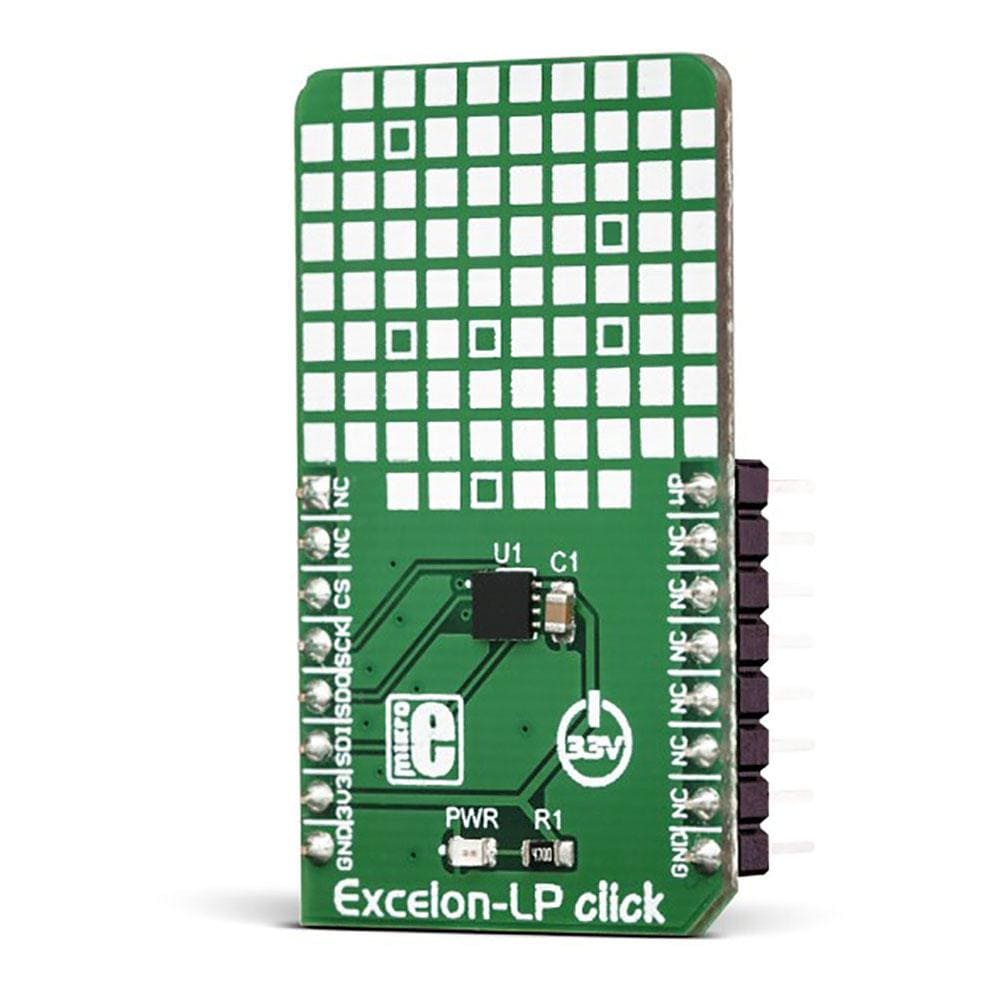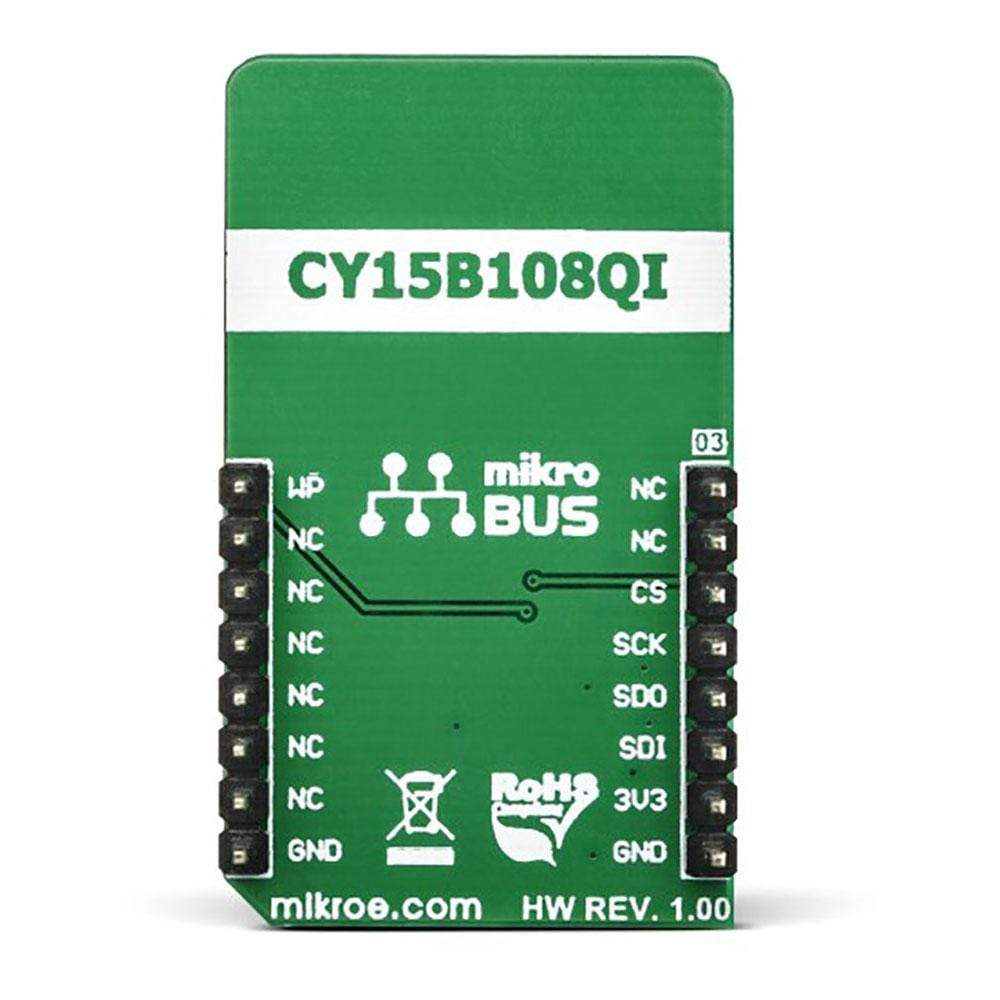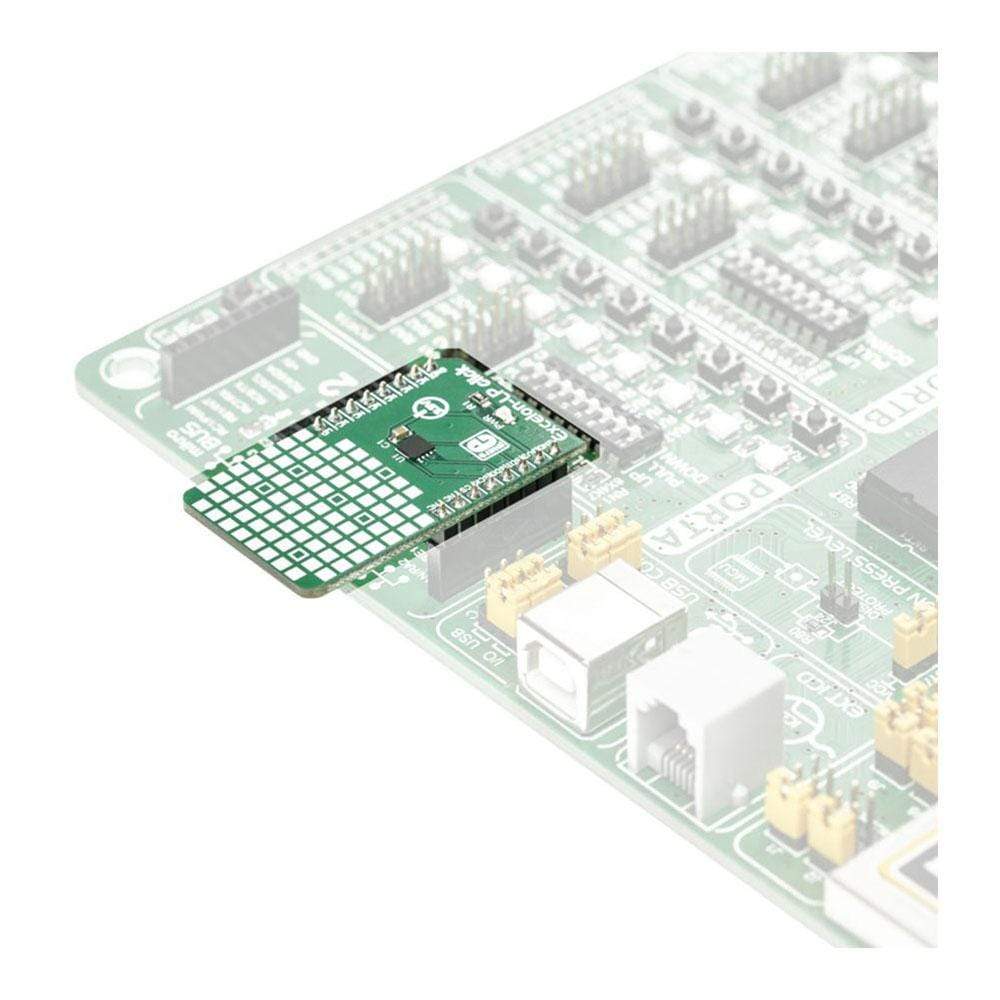



Overview
The Excelon LP Click Board™ carries a ferroelectric RAM module. Ferroelectric RAM, also known as FRAM, is a non-volatile memory type, with characteristics comparable to much faster DRAM memory modules. It is a much faster alternative to common serial FLASH and EEPROM modules that use conventional technologies. Excelon LP Click Board™ is ideal for embedded applications which frequently execute write operations. It can be used for a wide range of applications, ranging from data collection where the number of write cycles may be critical, to demanding industrial controls where lengthy write intervals of conventional serial FLASH or EEPROM memory modules can cause data loss.
The Excelon LP Click Board™ comes in a package that also includes the mikroSDK software and a library with all the functions. The Click Board™ comes as a fully tested and approved prototype, making it a reliable device ready to use on the development board.
Downloads
Das Excelon LP Click Board™ verfügt über ein ferroelektrisches RAM-Modul. Ferroelektrisches RAM, auch FRAM genannt, ist ein nichtflüchtiger Speichertyp mit Eigenschaften, die mit viel schnelleren DRAM-Speichermodulen vergleichbar sind. Es ist eine viel schnellere Alternative zu herkömmlichen seriellen FLASH- und EEPROM-Modulen, die herkömmliche Technologien verwenden. Das Excelon LP Click Board™ ist ideal für eingebettete Anwendungen, die häufig Schreibvorgänge ausführen. Es kann für eine Vielzahl von Anwendungen verwendet werden, von der Datenerfassung, bei der die Anzahl der Schreibzyklen kritisch sein kann, bis hin zu anspruchsvollen industriellen Steuerungen, bei denen lange Schreibintervalle herkömmlicher serieller FLASH- oder EEPROM-Speichermodule zu Datenverlust führen können.
Das Excelon LP Click Board™ wird in einem Paket geliefert, das auch die MikroSDK-Software und eine Bibliothek mit allen Funktionen enthält. Das Click Board™ wird als vollständig getesteter und zugelassener Prototyp geliefert und ist somit ein zuverlässiges Gerät, das sofort auf der Entwicklungsplatine verwendet werden kann.
| General Information | |
|---|---|
Part Number (SKU) |
MIKROE-3104
|
Manufacturer |
|
| Physical and Mechanical | |
Weight |
0.019 kg
|
| Other | |
Country of Origin |
|
HS Code Customs Tariff code
|
|
EAN |
8606018713844
|
Warranty |
|
Frequently Asked Questions
Have a Question?
Be the first to ask a question about this.




